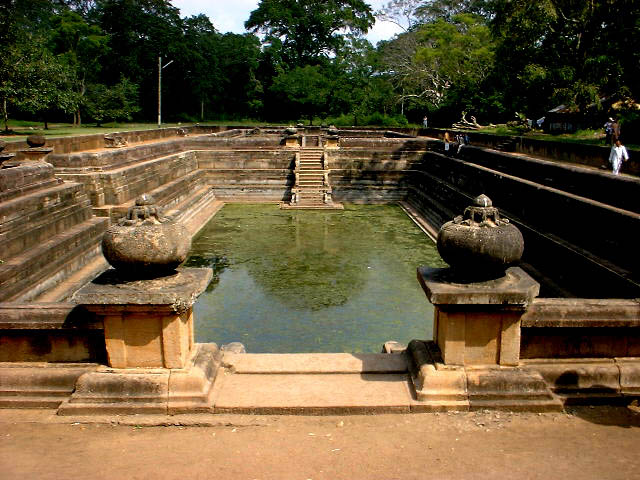The city, now a UNESCO World Heritage Site,
lies 205 km north of the current capital Colombo in Sri Lanka's North Central
Province, on the banks of thehistoric Malvathu Oya.
 From the 4th century BC, it was the capital
of Sri Lanka until the beginning of the 11th century AD. During this period it
remained one of the most stable and durable centers of political power and
urban life in South Asia. The ancient city, considered sacred to the Buddhist
world, is today surrounded by monasteries covering an area of over sixteen
square miles (40 km). Anuradhapura is also significant in Hindu legend as the
fabled capital of the Asura King Ravana in theRamayana.
From the 4th century BC, it was the capital
of Sri Lanka until the beginning of the 11th century AD. During this period it
remained one of the most stable and durable centers of political power and
urban life in South Asia. The ancient city, considered sacred to the Buddhist
world, is today surrounded by monasteries covering an area of over sixteen
square miles (40 km). Anuradhapura is also significant in Hindu legend as the
fabled capital of the Asura King Ravana in theRamayana.
Protohistoric Iron Age
Although according to historical records the
city was founded in the 5th century BC, the archaeological data put the date as
far back as the 10th century BC. Very little evidence was available about the
period before the 5th century BC, though excavations have revealed information
about the earlier inhabitants of the city. Further excavations in Anuradhapura
have uncovered information about the existence of a protohistoric habitation of
humans in the citadel. The protohistoric Iron Age which spans from 900 to 600
BC, marked the appearance of iron technology, pottery, the horse, domestic
cattle and paddy cultivation. In the time period 700 to 600 BC the settlement
in Anuradhapura had grown over an area of at least 50 ha. The city was
strategically situated of major ports northwest and northeast, it was
surrounded by irrigable and fertile land. The city was also buried deep in the
jungle providing natural defence from invaders.

In ruins
The ruins consist of three classes of
buildings, dagobas, monastic buildings, and pokunas. The dagobas are
bell-shaped masses of masonry, varying from a few feet to over 1100 ft (340 m)
in circumference. Some of them contain enough masonry to build a town for
twenty-five thousand inhabitants. Remains of the monastic buildings are to be
found in every direction in the shape of raised stone platforms, foundations
and stone pillars. The most famous is the Brazen Palace erected by King
Dutugamunu about 164 BC. The pokunas are bathing-tanks or tanks for the supply
of drinking water, which are scattered everywhere through the jungle. The city
also contains a sacred Bo-Tree, which is said to date back to the year 245 BC.
The railway was extended from Kurunegala to Anuradhapura in 1905.


Ruins of Anuradhapura
Eight Places of Veneration in Anuradhapura -
Atamasthana
Sri Maha Bodhiya

Ruwanwelisaya

Thuparamaya

Lovamahapaya

Abhayagiri Dagaba

Jetavanarama

Mirisaveti Stupa

Lankarama

Other structures
Isurumuniya

Magul Uyana

Rathna Prasadaya

Queen's Palace

Dakkhina Stupa

Sela Cetiya

Naka Vihara

Kiribath Vehera

Kuttam Pokuna

Samadhi Statue

Toluwila Statue


No comments:
Post a Comment